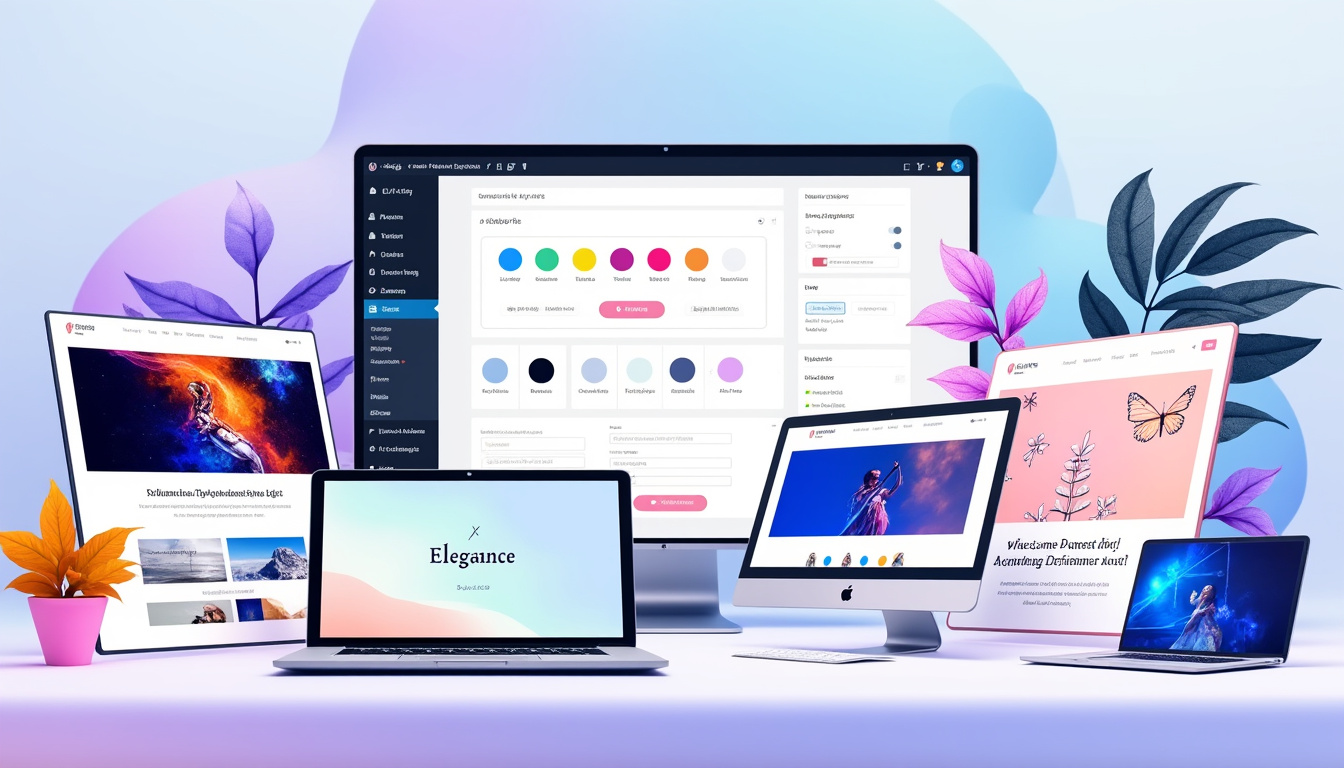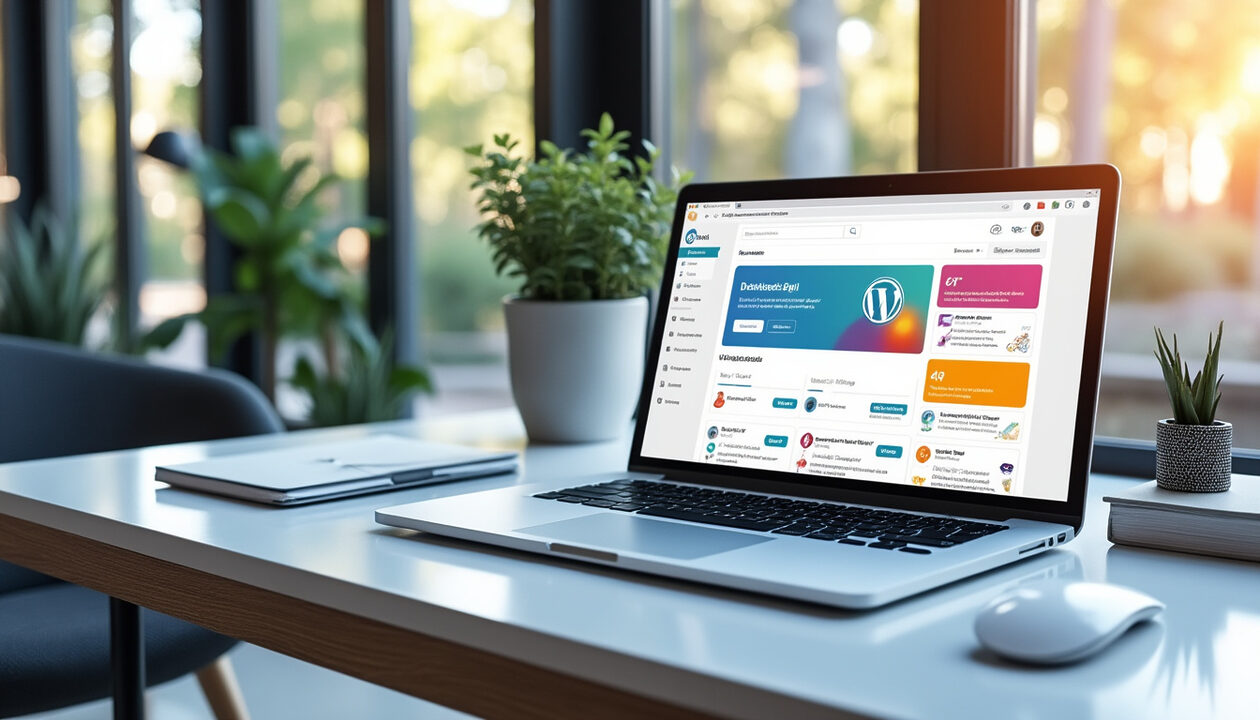There customizing your WordPress theme is an essential element in creating a website that not only catches the eye, but also reflects the unique identity of your brand or project. In a digital world where first impressions can make all the difference, having a personalized website allows you to stand out and attract the attention of your visitors. By adjusting colors, fonts, layouts, and more, you transform a standard template into a platform that exudes character and originality. In this article, we will explore tips and tricks simple but effective to maximize the potential of your WordPress theme, while making the customization process accessible to everyone, regardless of your level of expertise. Because after all, a website that suits you is a site that works for you!
There personalization of your WordPress theme is essential for several reasons. First of all, it makes it possible to achieve a uniqueness essential in a saturated digital world. By customizing the appearance and functionality of your site, you set your brand apart from others. This gives your visitors a fresh and original feel that can pique their interest.
Then, this personalization plays a crucial role in theuser engagement. A website that reflects your company’s identity and values is more likely to attract and capture the attention of visitors. By integrating interactive elements or specific features, you promote smooth navigation, increasing the likelihood that users will spend more time on your site and interact with your content.
THE branding is also a key aspect of customization. Your website is often the first point of contact between your brand and your potential customers. By customizing your theme, you can visually convey your values and message, reinforcing your brand image. Consistent colors, carefully chosen typography, and thoughtful layout reinforce visual identity and help build lasting recognition.
In short, customizing your WordPress theme is not only a matter of aesthetics, but it is also at the heart of the strategy to engage visitors and achieve branding goals.
If you are looking to customize your WordPress theme to give it a unique touch, here are some tips and techniques to help you in this process.
1. Use the Theme Customizer
WordPress has a built-in tool called Theme Customizer that allows you to change several aspects of your site’s appearance in real time. You can access this tool by going to Appearance > Customize. This tool will allow you to change elements such as the title, tagline, logo, as well as the colors and fonts of your site.
2. Create a Child Theme
To make advanced changes without losing your changes when updating the main theme, consider creating a child theme. This requires creating a folder in the wp-content/themes directory and placing a style.css file in it. This process will allow you to add your own styles and features without altering the original theme.
3. Leverage Page Builders
Page Builders such as Elementor or Beaver Builder provide an intuitive way to design your site. These tools allow you to drag and drop elements onto your page, making it easy to create complex layouts without any coding knowledge.
4. Use Gutenberg Full Site Editing
With the advent of Full Site Editing In Gutenberg, it is now possible to customize every part of your site, including headers and footers, directly from the block editor. This gives you increased flexibility to adjust the appearance of your site to your preferences.
5. Install customization plugins
There are several plugins which improve the customization of your theme. For example, plugins like Custom CSS allow you to add custom CSS code to your site without modifying the theme files. Others, such as YellowPencil, allow you to visually modify the styles of your theme directly from the interface.
6. Edit the code via Theme Editor
If you are comfortable with code, you can use theTheme Editor accessible via Appearance > Theme Editor to make finer adjustments. Be careful with this method, as one mistake can damage the entire site. It’s always a good idea to make a backup of your site before making any major changes.
These techniques and tools will allow you to customize your WordPress theme to your taste, whether you are a novice or an experienced user.

When you personalize your WordPress theme, it is essential to keep some key elements in mind to ensure optimal results and avoid common mistakes.
Tips to Consider
- Use a child theme : This will allow you to modify your theme without losing your changes after an update.
- Test compatibility : Make sure your theme works well with the plugins you use to avoid conflicts.
- Adapt the design to your audience : Consider your audience’s preferences to make your site more attractive.
- Optimize SEO : Customize titles and meta tags to improve the natural referencing of your site.
Mistakes to avoid
- Feature overload : Don’t add too many plugins that can slow down your site.
- Neglecting responsiveness : Make sure your theme is responsive for smooth navigation on mobile devices.
- Ignore Speed : Avoid using heavy images which can affect the loading time of your site.
- Do not save : Before customizing your theme, make a complete backup of your site to avoid any data loss.
Useful resources
- WordPress Codex : Essential documentation for any questions relating to WordPress.
- Video tutorials : Many platforms offer videos that explain theme customization step by step.
- WordPress Forums : A great place to ask questions and get advice from other users.
- Compatibility Testing Tools : Use tools to verify that your site works well across multiple browsers.
There personalization of your WordPress theme is an essential step in creating a site that suits you. By exploring the different customization options, you can adjust the colors, fonts and layout to reflect your unique style. Don’t forget to also explore the plugins available that can enrich your site with additional features.
It is crucial to test the changes on different screen resolutions to ensure an optimal user experience. Take the time to experiment with the settings to see what works best for you and your visitors. Your site is your storefront, so make sure it’s both attractive and functional.
Finally, keep in mind that the personalization is an ongoing process. Stay curious and open to learning to discover new ways to improve and update your site over time.


